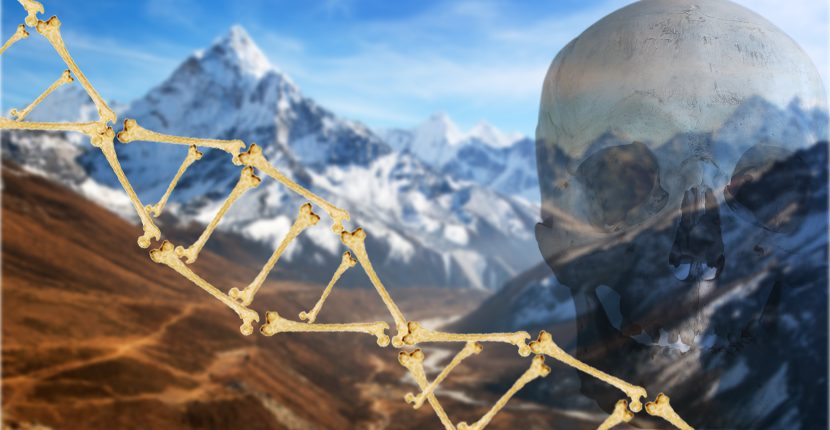On the Indian side of the Himalayas over sixteen thousand feet above sea level lies “Skeleton lake” where a large group of ancient human bones are scattered about at Roopkund Lake, as it is officially called. The one hundred and thirty foot wide, shallow glacial lake found in a valley in the Chamoli district of Uttaranchal is frozen most of the year but on warmer summer days it reveals its harrowing contents.
It was discovered during the second world war when a British soldier first saw the frozen lake full of bones but the mystery as to who they are, where they are from and why their bones are in the lake has not yet been solved.
Doctor Niraj Rai, of the Birbal Sahni Institute of Palaeosciences in Lucknow India, said: “Roopkund Lake has long been subject to speculation about who these individuals were, what brought them to Roopkund Lake, and how they died.”, according to dailymail. A study led by Doctor Rai has tested DNA, done radiocarbon dating and stable isotope dietary reconstruction leading them to determine the skeletons were from at least three different genetic groups.
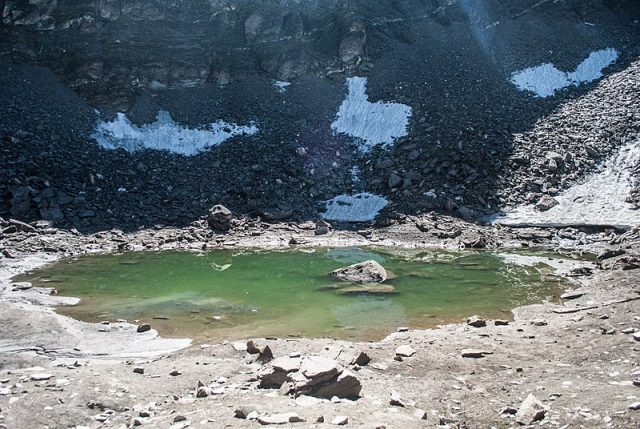
Originally, scientists thought the bones were from a single event – a military expedition led by General Zorawar Singh of Kashmir which became lost returning from the Battle of Tibet in 1841 or those of Japanese soldiers who in the early days of the Pacific theater got caught in bad weather. Another theory is that a fanatical religious ritual left the bones in the lake.
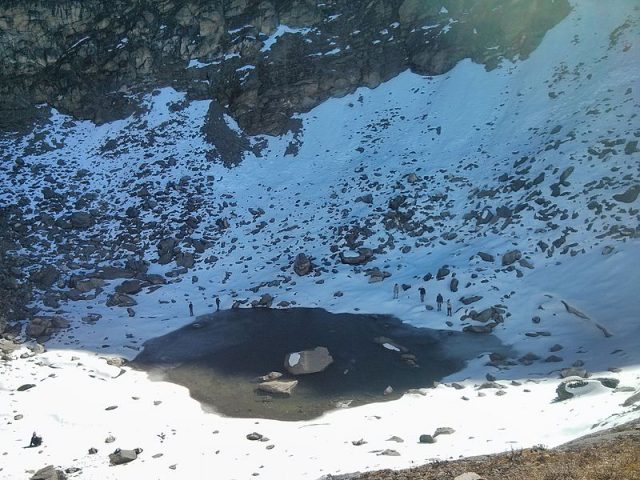
In 2013 researchers believed they had solved the mystery and attributed the bones to a 9th century group of Indians who got caught in an especially heavy hailstorm due to the fact that some of the skulls and shoulder bones bear injuries that would be consistent with being hit by baseball size balls. The bones show no signs of battle, no weapon injuries and no signs of a possible epidemic.

According to ancient-origins, a local legend tells of the King of Kanauj, Raja Jasdhaval and his pregnant wife, Rani Balampa went on a pilgrimage to the Nanda Devi Raj Jat, a commemoration to worship the Goddess Nanda Devi that occurs every twelve years. The royals were accompanied by their servants, dancers and other court members and the entire group got caught in a hailstorm. The dancers were considered to have defiled a holy land and the Goddess Nanda threw “iron balls” down on the group.
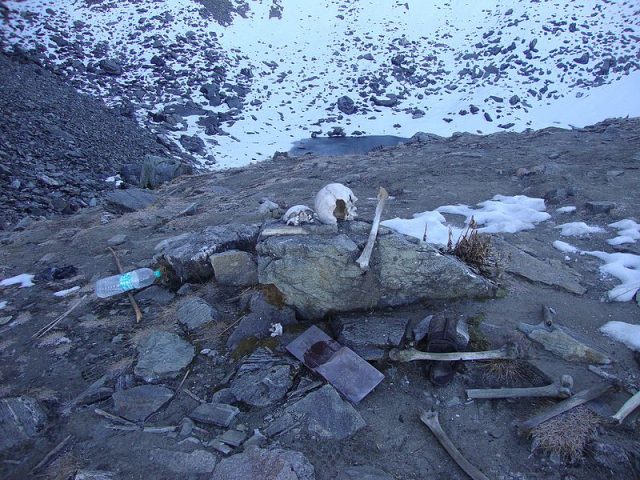
However, recent re-testing of DNA with full genomic analyses tells us that the skeletons did not appear there all at the same time nor were they related. Thirty eight sets of remains show that at least twenty three shared southern Asian backgrounds but surfaced there during separate events between the 7th and 10th centuries.
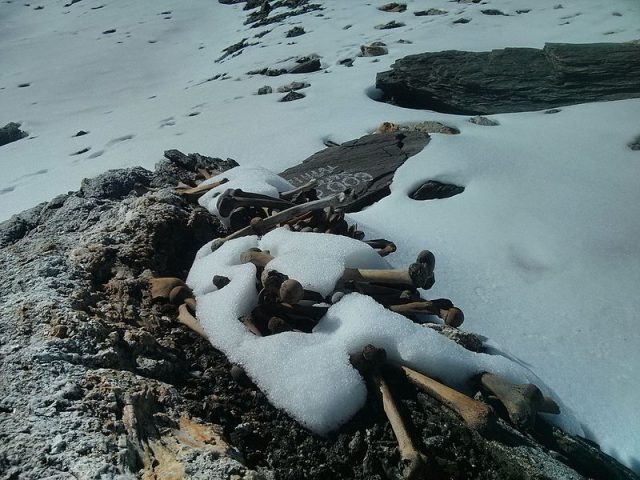
Another fourteen skeletons showed up at least one thousand years later and were genetically related to the Mediterranean people of Crete and Greece. “When we actually got the DNA back, it was super clear that some of these were not individuals with typical South Asian ancestry,” according to Éadaoin Harney, a researcher at Harvard’s Department of Organismic and Evolutionary Biology. “Definitely not something we were expecting at all”, National Geographic tells us.
Related Video:
Experts have no idea why Mediterranean people would have been in the Himalayan Mountains so long ago. Doctor Rai, the co-author of the study published in Nature Communications at nature.com claimed, “We have tried to answer all possible sources of genetic ancestries of [the] Roopkund skeletons but failed to answer why Mediterranean people were traveling to this lake and what they were doing here.”
Related Article: Ancient Hidden City Discovered Under Lake Titicaca
Researchers intend to return next summer for more testing and examination of relics such as bits of hair and nails as well as jewelry, a pair of leather shoes and iron spearheads. Unfortunately, publicity has made Roopkund Lake a curiosity and because it is not a protected site, tourists are not only damaging the area but taking bones home with them making research less exact and more difficult.
